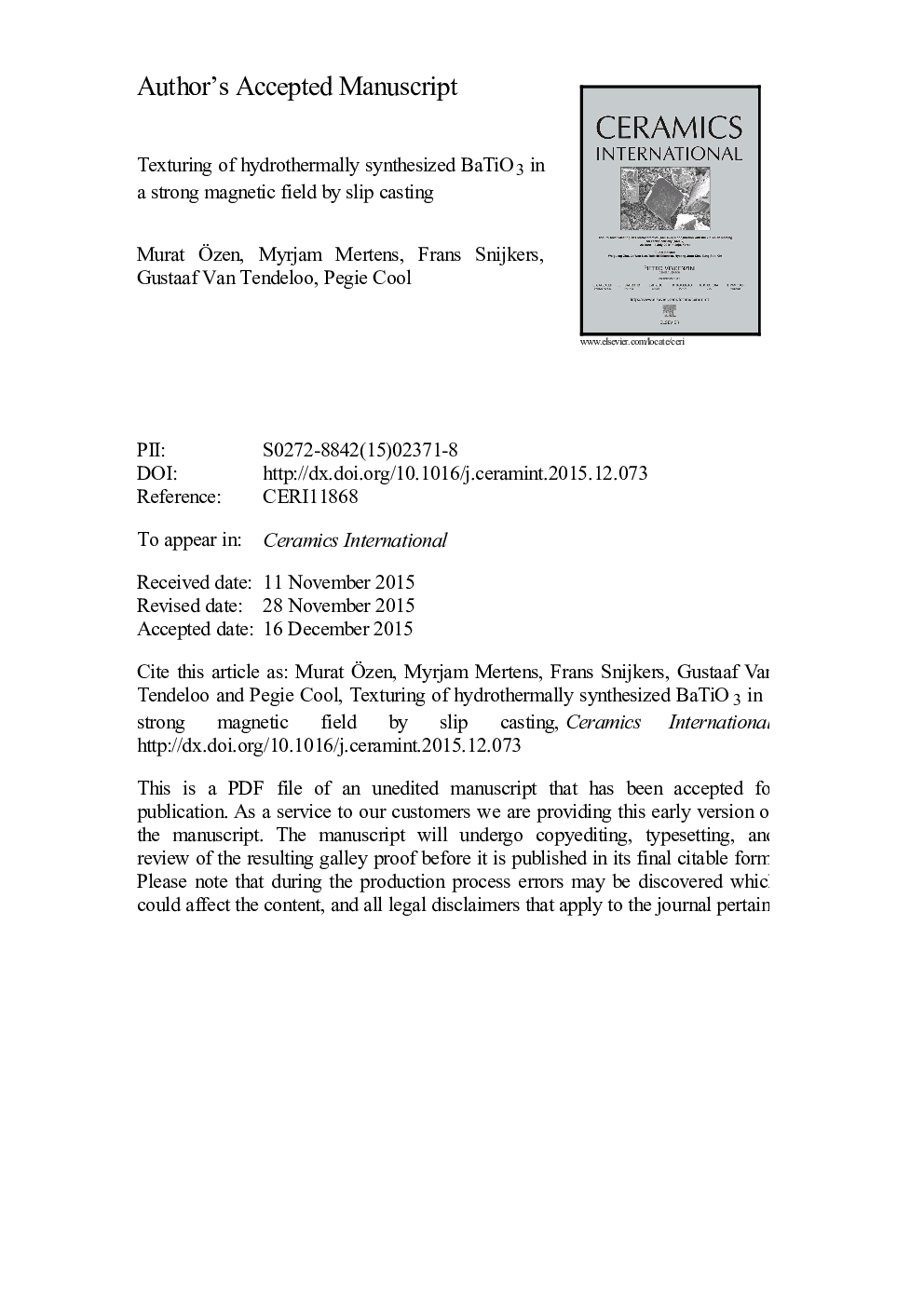| Article ID | Journal | Published Year | Pages | File Type |
|---|---|---|---|---|
| 10624424 | Ceramics International | 2016 | 23 Pages |
Abstract
Barium titanate powder was processed by slip casting in a rotating strong magnetic field of 9.4Â T. The orientation factor of the sintered compact was analyzed by the X-ray diffraction technique and the microstructure (grain-size) was analyzed by scanning electron microscope. The hydrothermally prepared barium titanate was used as matrix material and the molten-salt synthesized barium titanate, with a larger particle-size, was used as template for the templated grain-growth process. Addition of large template particles was observed to increase the orientation factor of the sintered cast (5Â vol% loading). Template particles acted as starting grains for the abnormal grain-growth process and the average grain-size was increased after sintering. Increasing the solid loading (15Â vol%) resulted in a similar orientation factor with a decrease of the average grain-size by more than half. However, addition of templates to the 15Â vol% cast had a negative effect on the orientation factor. The impingement of growing particles was stated as the primary cause of particle misorientation resulting in a low orientation factor after sintering. Different heating conditions were tested and it was determined that a slow heating rate gave the highest orientation factor, the smallest average grain-size and the highest relative density.
Related Topics
Physical Sciences and Engineering
Materials Science
Ceramics and Composites
Authors
Murat Ãzen, Myrjam Mertens, Frans Snijkers, Gustaaf Van Tendeloo, Pegie Cool,
